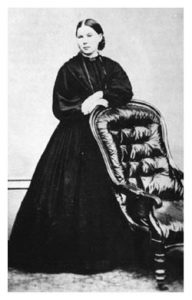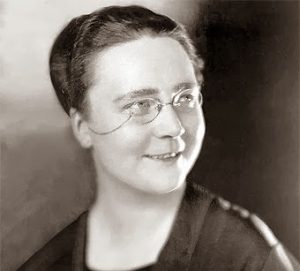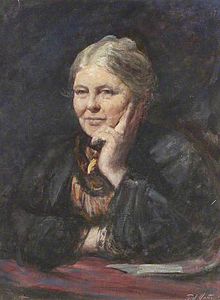
What we’ve learned in running our Classical schools is that there are a number of shades of gray within the Classical movement. From very stoic and rigid with less emphasis on the arts to programs like ours that are more hands-on, experiential, and, well fun. Charlotte Mason’s influence on our program is the reason why our model is perhaps not acceptable to some Classical school purists.
To review the nuances between a purely Charlotte Mason, Ambleside style and a Classical Ed school, here are some of the areas of similarity and difference (Source) :

(Lost Tools of Learning - Dorothy Sayers) The whole of the Trivium was, in fact, intended to teach the pupil the proper use of the tools of learning, before he began to apply them to “subjects” at all. First, he learned a language; not just how to order a meal in a foreign language, but the structure of a language, and hence of language itself—what it was, how it was put together, and how it worked. Secondly, he learned how to use language; how to define his terms and make accurate statements; how to construct an argument and Logic and Disputation. Thirdly, he learned to express himself in language—how to say what he had to say elegantly and persuasively. (pages 92-97)
Narration and or Read Alouds, done correctly can open a world of literature to scholars of all ages.
Educators use read-aloud and discussions to teach elementary students character (Laminack & Wadsworth, 2012).

"We believe focused read aloud experiences with carefully selected children's literature followed by guided conversations is one way you can create a climate in your classroom, school, or district where bullying is not an accepted or rewarded behavior. A climate where an individual's humanity and human dignity trump any difference(s) and kindness is the order of the day."
Recent research shows that punishing students who bully is not enough, that we must begin every child's education by establishing relationship skills and building empathy among students. We recommend a series of read-aloud books that focus on our shared humanity and can be used on day one of Kindergarten and throughout the elementary years. Integrating Read Alouds and purposeful narrations into a classroom support the development of children's insight into compassion and awareness of others. The power of a story and the active process of listening to an adult read with inflection and passion is a great way to expose kids to advanced vocabulary and concepts. The literature options provided in our schools help define and discuss the important lessons about bullying, empathy, and a whole host of characteristics exhibited by the book's characters. The integration into the English Language Arts curriculum will help develop literacy skills and strategies, conversation, critical thinking, character analysis, and reflection connect read-aloud experiences to the anchor standards for reading.
Narration was the key tool for Charlotte Mason and a part of our classroom instruction in the lower grades. We use the process of read aloud by the teacher and students narrating back the story to evaluate what the kids retained from their read-aloud or reading. Mason believed that this retelling, in the student's own words, helped to ensure information was retained and remembered.
A great place to understand the nuances of Charlotte Mason’s philosophies can be found at Simplycharlottemason.com
By “Atmosphere,” Charlotte meant the surroundings in which the child grows up. A child absorbs a lot from his home environment. Charlotte believed that the ideas that rule your life as the parent make up one-third of your child’s education.
By “Discipline,” Charlotte meant the discipline of good habits—and specifically habits of character. Cultivating good habits in your child’s life make up another third of his education.
The other third of education, “Life,” applies to academics. Charlotte believed that we should give children living thoughts and ideas, not just dry facts. So all of her methods for teaching the various school subjects are built around that concept.
As an example of utilizing the Living Methods concept, Charlotte’s students used living books rather than dry textbooks. Living books are usually written in narrative or story form by one author who has a passion for his topic. A living book makes the subject “come alive.” And the students were required to tell back or narrate, in their own words what was read in the living book, in order to secure it in their minds. No fill-in-the-blank or multiple-choice for them; they practiced using rich language as they pointed out the ideas they gleaned from the reading and any mental connections they made between it and other ideas already residing in their growing minds and hearts.
In the Ethos Logos/Medici platform this concept is achieved by pairing classical novels with time frames in history. From reading about the trials and tribulations of Ranofer, a 12-year-old orphan boy in 1400 BC Egypt (Golden Goblet) to Jack London's, Call of The Wild and the tails of the gold rush Klondike, to brothers Sam and Tim's struggles of which side to support in the American Revolutionary war, these deep and rich stories transport our scholars into the time period. History becomes more than dates, facts, and events, and our students are learning what it was really like to live 3400 years ago.
She taught handwriting and spelling by using passages from great books that communicate great ideas rather than using just a list of words. We have done the same, each of our novels comes with spelling words from the novel your child is reading as well as Latin root words and grade-appropriate, Scripps Spelling word lists. You have a choice of how you would like to teach vocabulary. We provide templates and suggestions but it is your choice of how many, which ones, and how you decide to teach handwriting and vocabulary.
She encouraged spending time outdoors, firsthand, and learning the living ways of nature. She introduced the work of great artists and composers to her students and let them spend time with each other, getting to know their works personally.
One of our top teachers that joined our schools after a 20+ year background in teaching Elementary School in public schools brought to our teachers the idea of conducting science as nature studies. She was frustrated that some Principals would let her explore and venture outside to teach science while others tried to keep her in the box. She came to us early on and explained what her science classed looked like and we did our best to provide her with the resources and time to make science come alive for her 5th-grade class.
Little did I know then that was Sandy was doing was purely Charlette Mason and hands-on. Sandy’s students would go outside and observe an anthill or bird's migration over a period of time. They would study online, write reports, do presentations, and document their work in beautiful nature journals.
We ended up adopting Sandy’s model system-wide and had her lead professional development classes for our teachers. You can imagine her students loved Sandy as a teacher and got more out of their science classes than they ever would have from a book.
At the root of classical education schools are a few consistencies: history is the arch for each grade, character education and a focus on a child’s understanding of values and virtues is interwoven with all we do and nothing checks these two boxes better than including classical literature in the English courses.
Reading opens a world of ideas and sets a foundation of a broad vocabulary, increased language comprehension, and greater cognitive function. Screen time and video games are where our children’s attentions are but if we can make the reading process fun and engaging there is a whole new world of ideas that can change lives.
The failure, in my opinion, of Common Core to move student test scores is a failure in understanding a couple hundred thousand years of human development. For thousands of years, we have learned about life from stories passed down from the generations and told from elders to the youth around the fire. Common Core Standards push students to become surgeons on a piece of text all within the ‘four walls' of the text provided. Instead of relying on context, prior knowledge gained through the study of history, art, music, or science, Common Core focused on a strict interpretation of what was presented. States like Massachusetts have blended fiction and non-fiction quite well and bucked the trend started by Common Core and continue to see the results.
The work of Joseph Campbell, Carl Jung, C.S. Lewis, and others uniquely spell out the role of story, the parables learned from moral dilemmas of the characters, and the idea of the Hero’s Journey. George Lucas gave Joseph Campbell’s Hero’s Journey credit as the model for the 1977 Star Wars story. Luke is a hapless young man on a distant planet that gets thrown into an adventure where he must confront the dark forces and his evil father in order to make the galaxy right again.
Think about the Hero’s Journey story arch in sitcoms, superhero movies (Peter Parker to Spiderman, Clark Kent to Superman), old westerns, Harry Potter, and on and on. These stories resonate with us at an entertainment level but also on a deeper evolutionary level. Deep characters built with humans' emotions of doubt and fear that rise above these limitations and become the courageous hero of the stories are identifiable to our kids. Students can feel the emotions help decide what they would do in the same situations. That concept doesn’t happen in informational text and we are missing an opportunity if we don’t embrace the power of story.
Trying to explain to our school-age kids the nuances of envy, greed, wrath, pride is much easier when they are transported into a story where the main characters wrestle with these concepts in their interactions with others or their environment. Ever wonder why Jesus told so many parables? The Bible is riddled with riddles and stories that have a message that is important for us to be learning from. Shakespeare is the king of crafting stories that show the ins and outs of human emotions of jealousy, power, infidelity, anger, and much more. Reading classic literature teaches us life lessons through human history. These books are like a mirror through which we can see the lives of others. We can make ourselves better by comparing their good deeds and their bad points. Books like “Night,” by Elie Weisel, “Call of the Wild”, “1984,” “To Kill a Mockingbird,” “Uncle Tom’s Cabin,” etc., give us the opportunity to learn a lot from the characters animating these novels. Classical novels help us to tap our inner selves. Watching the stumble of a character who struggles with the events thrown at them makes these characters better. By reading and engaging in these stories, our hopes are that our students can achieve these life lessons without having to go through the pain and drama.